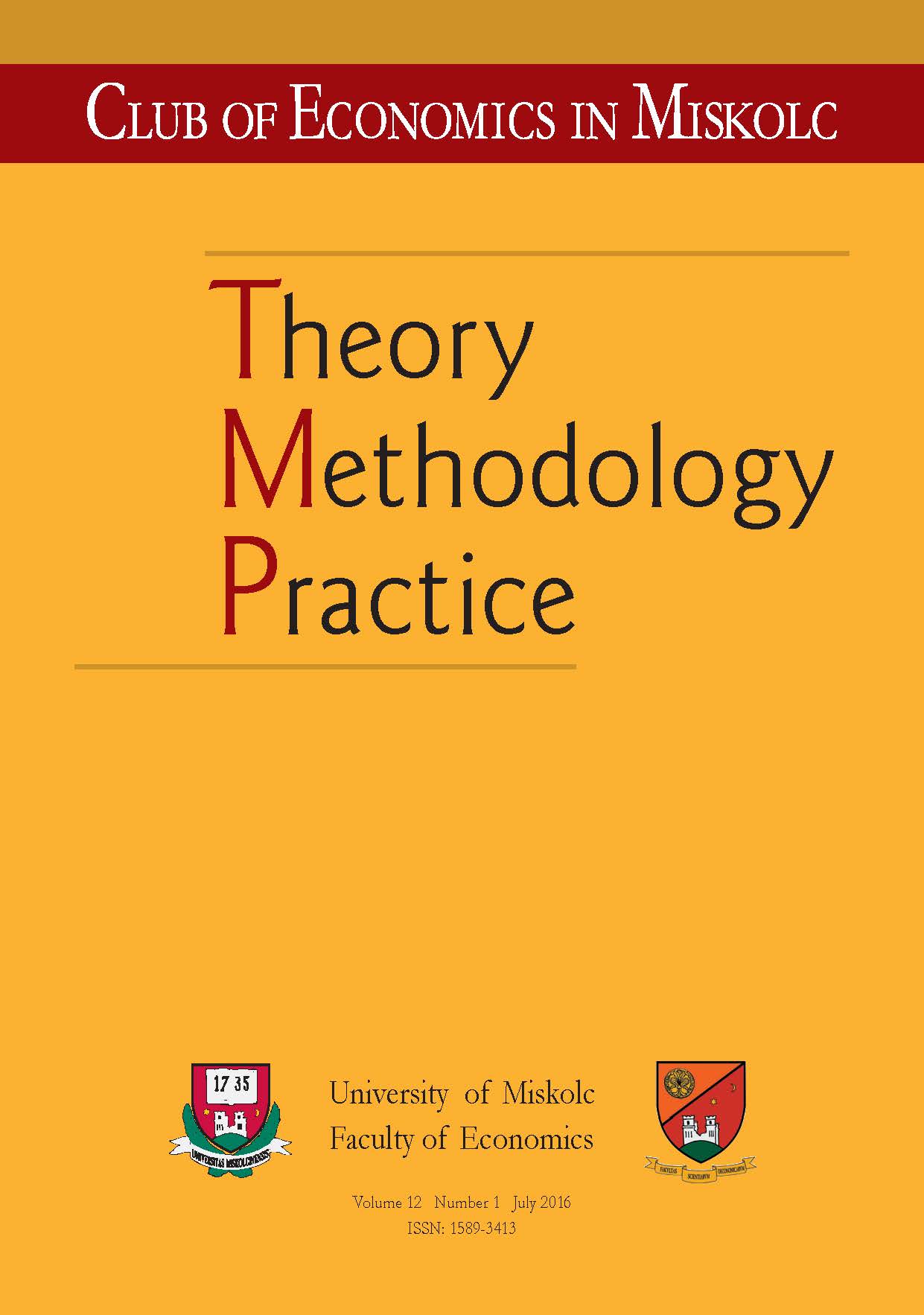Analysis of Sectoral Features in Hungarian Accredited Innovation Clusters
DOI:
https://doi.org/10.18096/TMP.2016.01.07Keywords:
cooperation, innovation cluster, networksAbstract
This paper discusses how sectoral characteristics are reflected in the operation of Hungarian accredited innovation clusters. The purpose of this paper is to analyse how sectoral bonding affects the mission of the clusters as well as their innovation and market goals, the membership criteria of the management and the motivation of the members and their cooperation. The study uses a literature review and in-depth interviews to identify the interrelations and the differences between networks and clusters, and to observe several sectoral features in the Hungarian accredited innovation clusters.
References
BARABÁSI, A-L. (2003): Behálózva, A hálózatok új tudománya.(Linked, The new sience of networks). Budapest, Magyar Könyvklub
BELL, S., TRACEY, P.,& HEIDE, J. B. (2009): The Organization of Regional Clusters. The Academy of Management Review, volume 34(4), 623-642. http://dx.doi.org/10.5465/amr.2009.44882930
CHESBROUGH, H. (2003): Open Innovation: The New Imperative for Creating and Profiting from Technology. Boston: Harvard Business School Press. http://dx.doi.org/10.1108/14601060410565074
COOKE, P. (2001): Clusters as Key Determinants of Economic Growth: The Example of Biotechnology. Cluster Policies – Cluster Development? Edited by Åge Mariussen. Stockholm
DOBRONYI, T., HALMOS, L., SOMOSI, É. (2012): Klasztermenedzsment: Magyarország.(Cluster Management: Hungary). Complex Kiadó, Budapest
DŐRY T., RECHNITZER J. (2000): Regionális innovációs stratégiák. (RegionalInnovation Strategies). Oktatási Minisztérium. Budapest
EUROPE INNOVA (2008): The concept of clusters and cluster policies and their role for competitiveness and innovation: main statistical results and lessons learned. Available: <http://ec.europa.eu/enterprise/policies/innovation/files/clusters-working-documentsec-2008-2635_en.pdf> [Accessed: 26th June 2013.]
ENRIGHT, M. J. (1996): Regional clusters and economic development: A research agenda. In U. Staber et al (eds.). Business Networks: Prospect for regional development, Berlin: Walter de Gruyter. http://dx.doi.org/10.1515/9783110809053.190
FORD, D., HÅKANSSON, H., JOHANSON J. (1986): How do Companies Interact? Industrial Marketing and Purchasing, Vol 1, No 1, pp. 26-41.
GROSZ, A. (2005): Klaszteresedés és klaszterorientált politika Magyarországon.(Development of clustersand cluster-oriented policy in Hungary).Doctoral thesis, University of Pécs.Available: <http://www.rkk.hu/rkk/publications/phd/grosz_ertekezes.pdf>
GUINET J. (2001). Boosting Innovation: The Cluster Approach. Paper for Innovation Clusters and Interregional Competition. International Workshop. 12-13 Nov 2001. Kiel
HÅKANSSON, H., SNEHOTA, I. (1995): Developing Relationships in Business Networks. T.J. Press (Padstow) Ltd
HORVÁTH, M., KEREKES, I. AND PATIK, R. (2013): Elemzés a magyar klaszterfejlesztés elmúlt 4 évéről /tények és tanulságok/ (Analysisof the Hungariancluster development in the past 4years /factsand lessons learned/. Available at:
<http://klaszterfejlesztes.hu/content/cont_51d4102c8c68e4.02287351/elemzes_a_magyar_klaszterfejlesztes_elmult__4_everol.pdf> [Accessed 5 August 2013]
LENGYEL, I. (2002): A klaszterek fejlesztésének általános tapasztalatai; A hazai építőipari versenyképességének javítása: a klaszterek szerepe a gazdaságfejlesztésben (General findings ofcluster development; Improving the competitivenessof the domesticconstruction industry: therole ofclustersin economic development). Editor: Lengyel I. – Rechnitzer J. Régió Art, Győr. pp. 99-124.
MAG ZRT. (2012): A magyar klaszteresedés elmúlt 3 éve az akkreditált innovációs klaszterek példáján keresztül. (Cluster development in the past three years in Hungary, throughthe example ofthe accreditedinnovation clusters).Available at: <http://magzrt.hu/nyomtatvanyok/Klaszteriroda/Klaszterek_elemzese_2012.pdf> [Accessed 12 August 2012]
ÖRJAN, S. (2009): Clusters – Balancing Evolutionary and Constructive Forces. Second edition. Ivory Tower Publishers, Sweden
RONCZ, J. (2007): A klaszteresedés tendenciái. (The tendencies of cluster development). Polgári Szemle. 2013. május – 9. évfolyam 1-3 szám.
SÖLVELL, Ö. (2009): Clusters – Balancing Evolutionary and Constructive Forces. Second edition. Ivory Tower Publishers, Sweden.
SZABO, S., FERENCZ, V., PUCIHAR A. (2013): Trust, innovation and prosperity. Quality Innovation Prosperity/Kvalita Inovácia Prosperita, XVII/2 – 2013. pp. 1-8. http://dx.doi.org/10.12776/qip.v17i2.224
TODTLING, F.& TRIPPL, M. (2005): One size fits all? Towards a differentiated regional innovation policy approach. Research Policy 34. 2005. pp. 1203–1219. https://doi.org/10.1016/j.respol.2005.01.018
URBANCIKOVÁ, N. (2011): The Identification of Technology Platforms and Innovation Areas with High Regional Impact. Kvalita Inovácia Prosperita/Quality Innovation Prosperity. XV/1 – 2011. pp. 17-26. http://dx.doi.org/10.12776/qip.v15i1.38
WEISZ, Á. (2008): A klaszteresedés, mint gazdaságfejlesztő erő, a pannon termál klaszter Zala megye gazdasági fejlődésére gyakorolt hatásain bemutatva. (Cluster development as a force of economic development: the effects of the Pannon Thermal Cluster on economic development in Zala country). Available at: <http://elib.kkf.hu/okt_publ/szf_22_11.pdf> [Accessed 12 August 2012].














